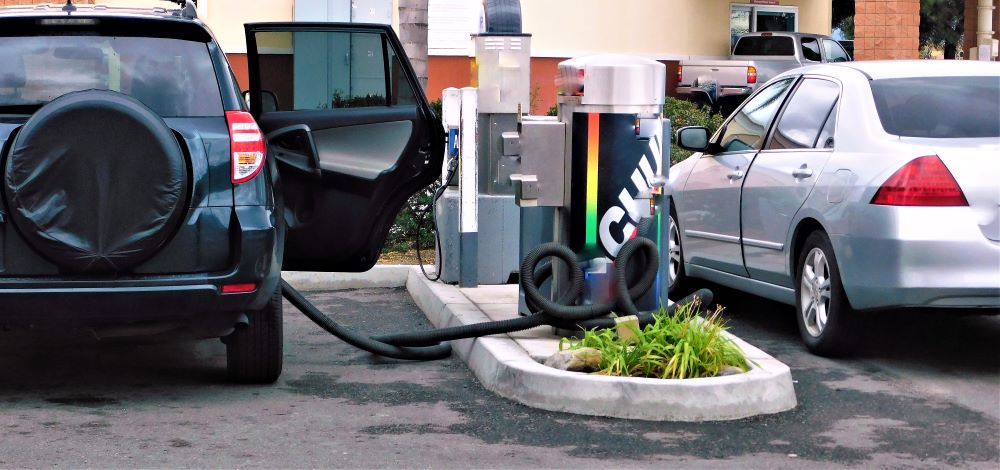9000+ Cashless Garages
96% Claims Settled (FY 24-25)

9000+ Cashless Garages
96% Claims Settled (FY 24-25)



Converting petrol to CNG can reduce fuel costs and mitigate further pollution. CNG, short for Compressed Natural Gas, is an eco-friendly alternative that offers improved mileage and lower emissions compared to conventional fuels, such as gasoline.
This article will explore the steps on how to convert your petrol car into CNG, the types of kits, and tips for making a smooth and safe transition. By the end of this article, you will have sufficient information to make an informed decision about CNG conversion for your vehicle.


Converting a petrol car to CNG can be an excellent option for reducing fuel costs and narrowing your carbon footprint. However, converting your vehicle to CNG can be expensive, and engine performance may slightly decrease. Additionally, you will lose some of your available boot space due to the installation of the CNG tank.
Thus, if you prioritise savings and environmental sustainability over engine performance, conversion to CNG can be a good future investment.
Compressed Natural Gas is a clean-burning alternative fuel made from natural gas. It is widely used in vehicles for its efficiency and minimal environmental impact from combustion. CNG is stored in high-pressure cylinders, allowing it to burn internally in the engine while reducing emission rates.
Increasing numbers of people are becoming interested in converting their petrol vehicles to CNG for various reasons. Here's a comparison of CNG and petrol, looking at aspects including cost, emissions, availability, and many other factors that would help you make a conscious choice:
Before converting your petrol car to CNG, determine whether your vehicle is eligible and compatible with the conversion process. Here are certain key points to consider:
Converting a petrol car to CNG involves several key steps, including selecting the right kit, installing it, and testing. Here's a general outline of the process:
Choose a CNG Kit
Select a certified CNG conversion kit that is specifically designed for the make and model of your car. These kits come fully equipped with a CNG cylinder, a pressure regulator, a fuel injection system, and all relevant attachments.
Find a Qualified CNG Installer
Locate a well-trained and licensed installer of CNG conversion kits, ensuring they are familiar with CNG conversions and have a good connection with local authorities to guide you through the conversion process.
Start Installing the CNG Kit
The CNG cylinder is fitted in the trunk or under the car, based on space availability and the make and model of the car. Regulators, valves, and piping are then included.
Engine and Fuel System Conversion
When switching from petrol to CNG, certain engine modifications will be required. This includes adjusting the air-fuel mixture and even modifying the ignition system for the best utilisation of CNG.
System Testing
This comprehensive test is conducted to verify leakage and performance after the conversion. Tests are conducted in both petrol and CNG for the exact vehicle, allowing the test to determine if the car performs well on both fuels.
Getting Certified
Finally, a certified establishment will inspect a vehicle to ascertain whether it meets the stipulated emissions and safety standards. After the inspection, the car will get a certification of compliance.
Certain mandatory checks ensure that your car will have a hassle-free process and efficient results before converting it to CNG; these include:
Vehicle Compatibility: Only petrol engines are suitable for conversion to CNG. Ensure your car has no major mechanical issues before proceeding.
Certified Installation Centre: Always visit a government-approved installation centre. Certified professionals ensure safe and legal installation.
Proper Documentation: Prepare all necessary paperwork, such as the car's registration and insurance. These are needed for legal certification after installation.
Space Availability: Verify that your car's boot has sufficient space for the CNG cylinder. In some cases, modifications are needed to allow installation.
Car Condition: The car should be in good working condition. Older, worn cars may cause problems after conversion.
Legal Compliance: Ensure your car complies with local emissions and safety standards. Otherwise, it might lead to legal issues.
Selecting the Right Kit: Choose the CNG kit that is appropriate for your car model and engine type, which requires professional advice for accurate selection.
There are numerous types of CNG kits. It would depend on the number of cars for specific engine configurations and power levels. Here is a summary of the most used CNG kits during vehicle conversion:
The carburetor-type CNG kit is used for older vehicles with a carburetor system for fuel supply. This kit contains a mixer, which mixes the CNG with air before it enters the engine.
The carburetor kit is simpler and cheaper than others, so it's ideal for vehicles with older, carburetor-based engines. However, it may not be as fuel-efficient and performance-oriented as modern systems.
Sequential Gas Injection (SGI) CNG kit is for modern fuel-injected engines. With careful control, the system feeds CNG into each cylinder through individual injectors, resulting in improved mileage, a smoother drive, and lower emissions.
SGI kits are more complicated and costly but offer far better performance for those whose vehicles demand a higher power output or significant driving.
This venturi CNG kit is similar to the carburetor type but is mainly used on older fuel-injected engines. It mixes the air-fuel mixture with the CNG before entering the intake manifold.
This system is less complex than the sequential system and is more cost-effective. Still, it may not offer the same efficiency or power output as the SGI kit, making it more suitable for smaller vehicles or low-performance engines.
LPI, or Liquid Phase Injection CNG kit, is an advanced system where the CNG is injected into the engine's intake in the liquid phase. The system offers superior performance benefits due to its cooling effect on air intake and increased fuel density, resulting in improved power and efficiency.
They are used for high-performance vehicles or those with a higher demand for power; these kits provide smoother operation with improved fuel economy.
The Dual Fuel CNG kit is designed for vehicles that run on petrol and CNG. It allows the vehicle to seamlessly switch between the two fuels, providing the driver with flexibility.
This kit includes a switch-over valve and a fuel management system to regulate petrol and CNG systems. If, however, one is looking for the benefits of CNG while also needing petrol, and CNG refuelling stations are scarce, then a Dual Fuel kit is ideal.
Converting your petrol-powered car to a CNG-powered car provides many benefits, and a few of them include:
While converting your petrol-powered car to CNG offers several advantages, there are also some disadvantages to consider before making the switch. Here are some of the potential drawbacks of converting to CNG.
CNG conversions increase premiums due to the added risk and modifications. Here's a breakdown of how installing CNG kits in your vehicle can affect car insurance premiums:
Maintenance and care are the prime needs to keep your car running smoothly and safely with the help of CNG. The following are key maintenance tips for optimal operation and the life of your vehicle running on CNG:
Converting your petrol vehicle to CNG is both eco-friendly and cost-effective. It reduces your energy bill, lowers your carbon footprint, and enhances engine performance. Although a little tedious, checking compatibility and going through a professional installation is well worth it, provided you reap the benefits of savings and go greener.